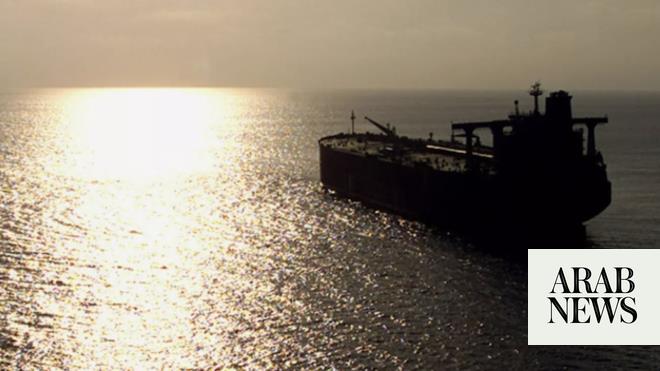
JEDDAH: The Red Sea Project is an ultra-luxury destination that brings together a beautiful landscape, adventure and cultural heritage. The project’s plan is to position the Kingdom on the global tourism map, create investment opportunities for the local private sector and develop the Kingdom’s tourism industry while preserving the nation’s cultural and environmental heritage.
In July of 2017, the Red Sea project was launched by Crown Prince Mohammed bin Salman, PIF deputy chairman. The luxury and sustainable international tourist destination on the west coast of the Kingdom is one of three major PIF projects.
As part of the domestic investment strategy, PIF created three Saudi giga projects, one of which is the Red Sea Project. Located between the cities of Umluj and al-Wajh, the project covers an area of 34,000 sq km, about 500 km north of Jeddah and at the crossroads of the Middle East, Europe, Asia and Africa.
A team from the Red Sea Development Company led by John Pagano, its CEO, delivered a visual presentation on the master plan of the Red Sea Project at AQRA Palace in Riyadh with a detailed brief about its economic and development objectives to become a global destination in the luxury tourism sector.
Research published by Abu Dhabi-based ADCB this week highlighted the importance of developing Red Sea tourism for the non-oil economy in the Kingdom.
“New mega projects to develop tourism have been announced this year, including the ulta-luxurious Amaala tourist resort on the Red Sea and the Wadi Al-Disah project, which will extend across several archaeological sites,” said ADCB in its “Saudi Arabia: Weather watching as the winds change” report. “These projects should help to diversify the tourism mix in the country.”
“The PIF is expected to kick-start many of these projects as an anchor and seed investor with international and private sector partners likely to be sought once momentum builds.”
“The destination will provide a unique sense of place for visitors and offer nature lovers, adventurer, cultural explorers and guests looking to escape and rejuvenate, a wide range of exclusive experiences, combining luxury, tranquility, adventure and beautiful landscapes,” said Pagano during the initiation of the project in 2017.
The project’s progress report comes in after an agreement with six countries bordering the Red Sea and the Gulf of Aden to establish an entity of cooperation. Representatives from Egypt, Djibouti, Somalia, Sudan, Yemen and Jordan gathered in Riyadh to discuss the initiative.
“This new maritime alliance is coming at a critical time in the history of the relations between the Arabian Peninsula and all lands west of the Red Sea area including the Gulf of Aden,” said Dr. Theodore Karasik, senior advisor at Gulf State Analytics in Washington DC.
“These straits, gulfs, and ports around the Red Sea region are now filled with an increasing number of bases from land to sea to protect maritime shipping but also to safeguard littoral coast lines. The geopolitical picture is beginning to show the growing importance of the Red Sea and surrounding environs in order to safeguard transit zones and that a regional grouping is necessary.
“Coastal development projects that boost not only the Saudi economy but other regional countries as well are important to the development of the Red Sea. Red Sea tourism projects are increasing and it is important to guarantee the safety and security of these commercial, water-front zones in a changing security environment. Ultimately, NEOM is also at the center of this effort given its trans-border plans.”
“Importantly, the creation of the maritime zone is to continue to build strong connections with the Horn of Africa states that guarantees a coordinating mechanism as ports and economic projects expand. A key point is helping land-locked Ethiopia further develop its links to blue waters. Only through such an organization can deconfliction issues be resolved as all countries in the region work more closely together.”
The Red Sea Project destination will be developed around several geographical treasures: 200km of coastline; over 50 untouched, pristine islands with stunning coral reefs; historical sites; dormant volcanoes and nature reserves.
The first phase of the project, scheduled for completion in the first quarter of 2022, will include up to 3,000 hotel rooms, an airport to serve the destination, and yacht marinas, as well as residential properties and recreational facilities.
By completion of all stages of the project, there will be 22 developed islands of more than 90 islands, and 70,000 jobs created. The project will play a significant role in driving economic diversification in Saudi Arabia by attracting nearly 1 million visitors every year, and achieving a contribution of SR22 billion to the Kingdom’s GDP.
Dr. Hamdan Al-Shehri, an international affairs scholar based in Riyadh, said: “Among Saudi Arabia’s objectives is to combine all efforts and ensure joint efforts are made to secure navigation in the Red Sea, address threats that may affect its security and stability, and prevent other states, such as Iran, from using the terrorist groups in these countries.
“The difference between Saudi Arabia and Iran is that Iran uses those terrorist militias against these countries and against the region’s security while Saudi Arabia does not use this scheme. The Kingdom aims to deal with states that have security and stability problems to make them realize the importance of security and stability in their countries, therefore motivating joint action in clearing the region of any threat that harms the security of the Red Sea. This way, all parties will benefit from future projects in which everyone is welcome to participate.
“Thus, it is important that everyone partners in securing the Red Sea so that common goals are achieved quickly and efficiently, and then everyone can benefit from achieving these goals in investment and economic fields that serve all parties.”












